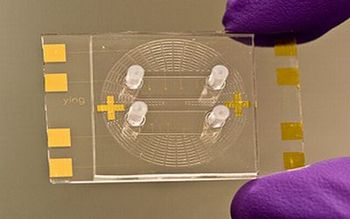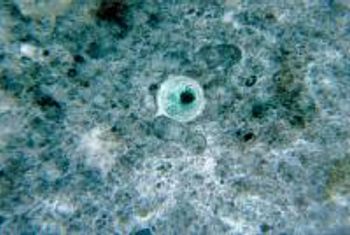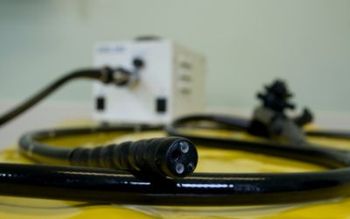
News


















Associate professor Daniel Janies, PhD, an expert in computational genomics at the Wexner Medical Center at The Ohio State University (OSU), is working with software engineers at the Ohio Supercomputer Center (OSC) to expand the reach of SUPRAMAP (supramap.org), a web-based application that synthesizes large, diverse datasets so that researchers can better understand the spread of infectious diseases across hosts and geography. By separating SUPRAMAP's client application from the underlying server software, the goal is to reconfigure the server in a way that researchers and public safety officials can develop other front-end applications that draw on the logic and computing resources of SUPRAMAP. Janies and his colleagues at Ohio State, the American Museum of Natural History (AMNH) and OSC developed SUPRAMAP in 2007 to track the spread and evolution of pandemic (H1N1) and avian influenza (H5N1). Using SUPRAMAP, we initially developed maps that illustrated the spread of drug-resistant influenza and host shifts in H1N1 and H5N1 influenza and in coronaviruses, such as SARS, says Janies. SUPRAMAP allows the user to track strains carrying key mutations in a geospatial browser such as Google EarthTM. Our software allows public health scientists to update and view maps on the evolution and spread of pathogens. The original implementation of SUPRAMAP was built with a single client that was tightly coupled to the server software. We now have decoupled the server from the original client to provide a modular web service for POY, (poyws.org) an open-source, freely available phylogenetic analysis program developed at AMNH. The web service can be used by other researchers with new ideas, data, and clients to create novel applications, says Ward Wheeler, PhD, curator-in-charge of scientific computing at AMNH and a coauthor with Janies and others on a recent article about the project in the journal Cladistics. To demonstrate the POY web service, we have produced a new client software application, GEOGENES (www.geogenes.org), says Wheeler. Unlike in SUPRAMAP, in which the user is required to create and upload data files, in GEOGENES the user works from a graphical interface to query a curated dataset, thus freeing the user from managing files. Currently this service is hosted on large shared systems at OSC, the centers flagship HP Intel Xeon Oakley Cluster, their IBM Opteron Glenn Cluster and on a smaller dedicated cluster at Ohio States Wexner Medical Center. Decoupling the client from the server provides another advantage in that the implementation of the server can change to take advantage of advances in computing technology, notes Thomas Bitterman, a senior software engineer at OSC and co-author of the journal article. For example, the recent addition of the Oakley Cluster at OSC has made available a large set of GPUs that could result in performance improvements. To give their new software implementation a proper road test, the researchers examined groups of key mutations in a pathogen they hadnt tracked before the H7 avian influenza virus. Infection of humans by the H7 virus is rare, but it has occurred among people who have direct contact with infected poultry. H7 influenza, like H5N1 is largely an avian virus, but infects humans periodically, and therefore we wanted to see how it evolves, says Janies. We have shown that pathogenicity of the H7 influenza is highly labile on a molecular evolutionary level and has occurred independently in many places around the world. Now that the H5N1 papers detailing transmission among mammals have been published, we can next pinpoint the natural geographic distribution of key sets of mutations that could lead to human-to-human transmission. Our maps will allow scientists to better deploy public health resources to protect citizens and forces in the field. Grant funding through the U.S. Army Research Laboratory and Office supports this Innovation Group on Global Infectious Disease Research (gidr.osu.edu) project. Support for the computational requirements of the project comes from AMNH and OSC. Ohio States Wexner Medical Center, Department of Biomedical Informatics and offices of Academic Affairs and Research provide additional support.

Biomedical engineers at UC Davis have developed a microfluidic chip to test for latent tuberculosis. They hope the test will be cheaper, faster and more reliable than current testing for the disease.

Research by a collaborative group of scientists from UC San Diego School of Medicine, UC San Francisco and Wake Forest School of Medicine has led to identification of an existing drug that is effective against Entamoeba histolytica. This parasite causes amebic dysentery and liver abscesses and results in the death of more than 70,000 people worldwide each year.

The recent attention to dirty instruments is interesting, as this is not a new issue. For years, sterile processing professionals have been dealing with issues surrounding reprocessing of reusable medical devices and surgical instrumentation. One of the major reasons certification programs were developed for sterile processing personnel was to be able to verify competencies for personnel performing the critical functions of cleaning, high-level disinfection and sterilization.

People across the United States now know that hair dressers need some form of certification to do their jobs but if you are cleaning surgical instruments for surgery, unless you live in New Jersey, you are not required by law to have some basic knowledge to do the task at hand -- cleaning and sterilizing medical devices in a medical facility.



In recent years, there has been an increased discussion in the healthcare arena concerning the proper, consistent cleaning and reprocessing of endoscopes. Healthcare facilities failure to protect patients from the risk of exposure to disease has made headlines. Reacting to those headlines, accreditation agencies and health departments are increasing their surveillance of practices of scope reprocessing.




